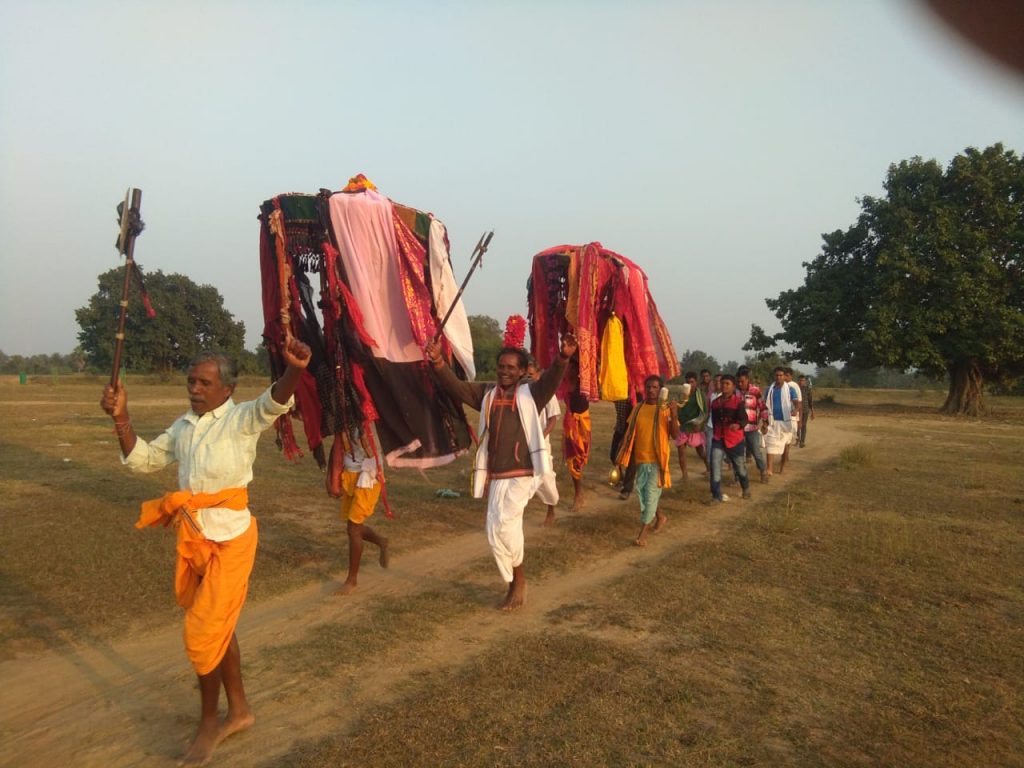Gudvelipadar: ‘Chudakhai’ is a very popular festival celebrated in both Boudh and Subarnapur districts in which the tribals give importance to both environment and strive for women empowerment.
Places namely Marjakud, Rushibandh, Panchara, Badmal, Badikata, Narayan Prasad, Kantiapadar, Jhadrajing, Thidkajur, Bukesingha, Jamtangi, Babda, Kampla near Athmallik and Paljher of Boudh district celebrate the festival. It is also celebrated at Dubula under Tarva block of Sonepur district. However, some variations are observed in its celebrations at places. For instance, it is observed on Margasira Purnima or on full moon day in the Hindu month of Margasira (November-December) at Marjakud while at Rushibandh, it is celebrated on last Thursday of Margasira. The point to be noted here is that Maheswari is the only goddess to be worshipped on the occasion.
Mostly the Kondh community, among the tribals, celebrates the festival with pomp and gaiety.
Panchara village of Boudh district is the land of origin of the festival. According to folklore, there were five Kondh zamindars in Panchara village. But the other zamindars of the village were headed by a fellow called Rudhu Mallik. Once, Rudhu and some fishermen visited Amurda ghat, near Mahanadi river, for fishing.
When the fishermen cast their net in the river water, they felt that they had a big catch but when they pulled it out, they found nothing.
Despite repeated efforts, they failed to catch a single fish on that day. Their entire day was without any fruitful result and so, they returned to their village.
At night, goddess Maheswari appeared in the dream of Rudhu Mallik and told him that she was there in the net every time they lifted it out of the water but their human eyes could not see and recognise her.
If Mallik offered seva-puja to her then he would be blessed with wealth and honour, the goddess told him. Hearing this, Mallik woke up from sleep and tried to recall what transpired in his dream. Thereafter, he decided to worship the deity.
Since then the people of Panchar village and entire Boudh district have been celebrating the festival. Princess of Boudh district was married to Subarnapur king. As a token of gift, Boudh king Biswamber Debanker had given some parts of the district to Subarnapur king and since then the festival is also being celebrated by the tribals of Subarnapur.
As per the tradition, the ‘Chudakhai’ yatra is observed on every year’s last Thursday and Friday in margasira. The tribal zamindars are the main purodha (one who offers prayers) in the festival.
A log of Rohini tree represents ‘Chudakhai’ deity. The top of the log is shaped round. Since the deity is identified with the Rohini tree (Soyminda febrifuge), people in the area do not cut live trees. They believe that all trees are sacred and it will hurt the sacred trees if they cut them. Villagers also do not use live trees for firewood or for any other commercial use in this area due to the strong religious belief. Villagers are sentimentally and religiously attached with the trees.
Women of the community surrender themselves completely before the deity while performing the ritual dance. The aim and objective of this ritual dance is to appease the deity who saves their village from fire, flood and such other natural calamities.
A sword is worshipped before goddess Maheswari. Tribals believe that the sword is the symbol of power of the goddess.
The priest makes an offering of chudda (flattened rice) to goddess in the temple and so, the yatra is named as ‘Chudakhai’ yatra.
After worshipping, the prasad is distributed among the villagers and visitors.
Before the observance, all the villagers assemble in front of the house of the dehuri (priest) for preparation of the yatra. Puja materials and other items of the goddess are taken out from the store room of the priest. Among the puja materials, silver umbrella is the most important item of the deity. Yatra starts with the music of dhol, nishan, muhuri and tasa. People sing hula songs— vulgar songs— in sync with music during the procession. The whole atmosphere is vibrated with energetic dance. The visitors and spectators also participate in this dance and procession. The procession leads to the pitha of Sati-Kanya.
Scholars claim ‘Chudakhai’ yatra is an amalgamation of Buddhism and Hinduism. However, there is no record to establish the same.

